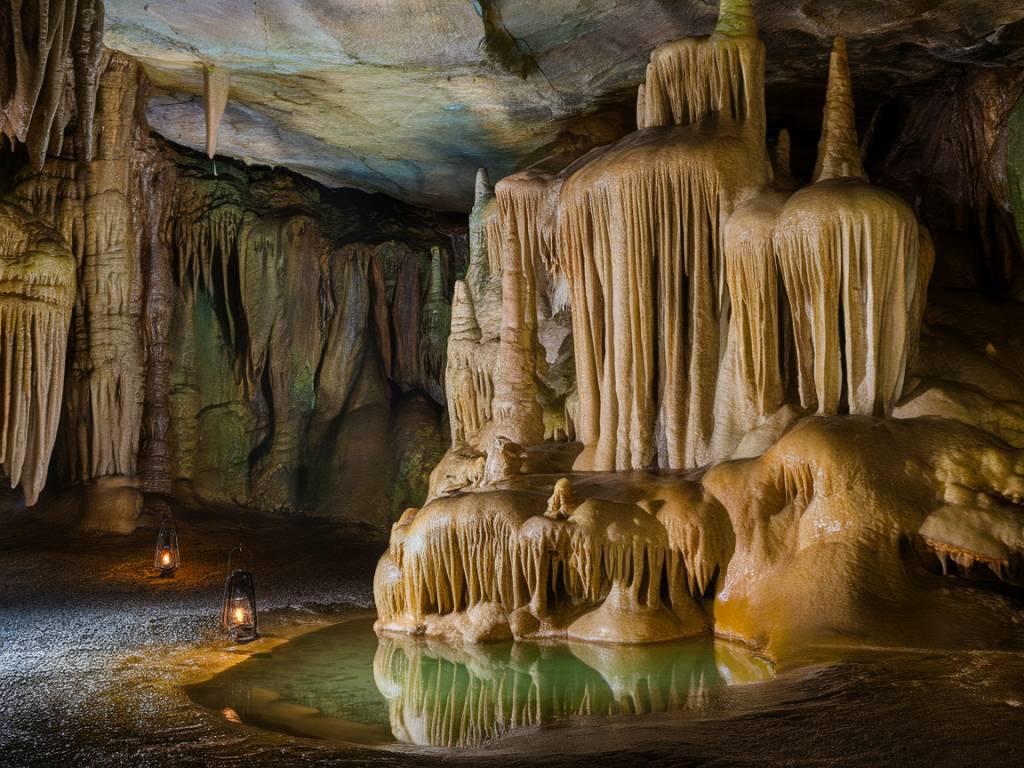Deep Beneath the Surface: Discovering Wales’ Underground Caverns
Wales is a land defined by its myths, often shrouded in mist, mountains, and sea. But the stories don’t end there. Beneath its craggy landscape lies a hidden world beneath your feet—underground caverns that not only evoke a sense of wonder but are steeped in rich mythology, cultural heritage, and tales that have been passed down through generations. Let’s descend into the darkness and uncover these hidden treasures together.
The Mystique of Underground Landscapes
Have you ever stood on a mountainside and wondered about the secrets lurking below? Beneath the hills and valleys of Wales lies an intricate network of caves and caverns, formed over millennia by the slow but persistent forces of water and time.
Among these natural formations, some stand out not merely because of their size or beauty but because of the folklore that clings to their walls. These are places where geology intersects with superstition, and where every drip of water seems to whisper a tale.
Ogof Ffynnon Ddu: The Black Spring Cave
Let’s start with a name that’s as mysterious as its depths: Ogof Ffynnon Ddu, or “Cave of the Black Spring.” Located in the Brecon Beacons National Park, this is the deepest cave system in the UK, plunging over 300 meters beneath the surface. Its passages and chambers stretch an overwhelming 70 kilometers. But what makes this cave truly unique is its strong connection to Welsh mythology.
According to local lore, Ogof Ffynnon Ddu was said to be a gateway to Annwn, the Celtic Otherworld. Annwn is described in Welsh mythology as an ethereal paradise, but getting there was no easy task—it required bravery, perseverance, and a pure heart. It’s easy to see how generations of storytellers might have envisioned another world in these dark, glistening chambers, especially when the cave’s interior seems so hauntingly otherworldly.
Visitors to Ogof Ffynnon Ddu often report a kind of eerie silence that amplifies every noise—your breath, your steps, even the occasional water drop falling from above. Could this silence truly separate two worlds? It’s hard not to wonder.
Dan-yr-Ogof: The National Showcaves of Wales
Switching gears to a cavern system a little more accessible to the modern explorer, Dan-yr-Ogof offers a multi-faceted caving experience. Nestled in the Brecon Beacons, Dan-yr-Ogof is often referred to simply as « The National Showcaves. » Its 11 miles of passages have captivated visitors for decades, making it one of the most visited attractions in the region.
This cave system doesn’t just impress with its stalactites and stalagmites—it’s like stepping into an ancient cathedral carved by time itself. But what’s perhaps most thrilling are the legends surrounding it. One local story tells of two brothers, who originally discovered the caves in the early 20th century, encountering shadowy figures and strange noises during their first exploration. To this day, some locals claim that certain sections of Dan-yr-Ogof are inhabited by the Tylwyth Teg—the Welsh fairy folk, often associated with mischief and hidden treasures.
If you visit, don’t just marvel at the caves’ natural beauty—take a moment to imagine the stories swirling unseen in the air around you.
The Legend of Porth yr Ogof
Sometimes, mythology and geology collide with a hint of danger. Enter Porth yr Ogof, a cave system near the River Mellte in South Wales. Famous for being the largest cave entrance in Wales, the gaping mouth of Porth yr Ogof is as inviting as it is intimidating. The cave’s entrance is wide and arched—its size evoking a sense of grandeur—but tread carefully. Stories abound about its treacherous waters.
Local myth tells of a water spirit haunting the cave’s nearby pools, dragging the unwary into its depths. The swirling waters were said to ensnare the souls of those who ventured too close, in echoes of ancient Celtic cautionary tales about meddling with nature’s raw power. Visiting Porth yr Ogof is a reminder of both the beauty and danger of the natural world, and perhaps, a little bit of respect for those whispered legends won’t go amiss.
Caring for Wales’ Subterranean Heritage
The caves of Wales aren’t just places of mystery—they’re time capsules. Archaeologists have unearthed ancient human remains, tools, and burial sites in several Welsh caves, evidence of their importance in prehistoric times.
Take for instance the Red Lady of Paviland. Found in a cave on the Gower Peninsula, this skeleton—actually the remains of a young man—dates back over 33,000 years and is one of the oldest ceremonial burials in Europe. The significance of these discoveries reminds us that caves are more than geographical features; they are part of Wales’ cultural and historical narrative.
As tourism to these sites increases, it’s vital to balance curiosity with conservation. Many of these caverns are delicate ecosystems, home to rare bat species, mosses, and fungi. Ethical exploration ensures that their natural beauty, and the myths they hold, endure for generations to come.
Will You Venture Into the Unknown?
The underground treasures of Wales offer a unique lens to experience the country’s landscapes, history, and folklore. Whether you’re a daring spelunker or more of a curious traveler, there’s something about these caves—both their tangible and mythical elements—that draws people in. Do you believe in the Tylwyth Teg or the gateway to Annwn? Or do you simply crave the kind of wonder that only comes from exploring the earth’s hidden chambers?
Either way, the caves of Wales await. So pack a sturdy pair of boots, a torch, and perhaps a pinch of courage—your adventure below the surface is calling.

